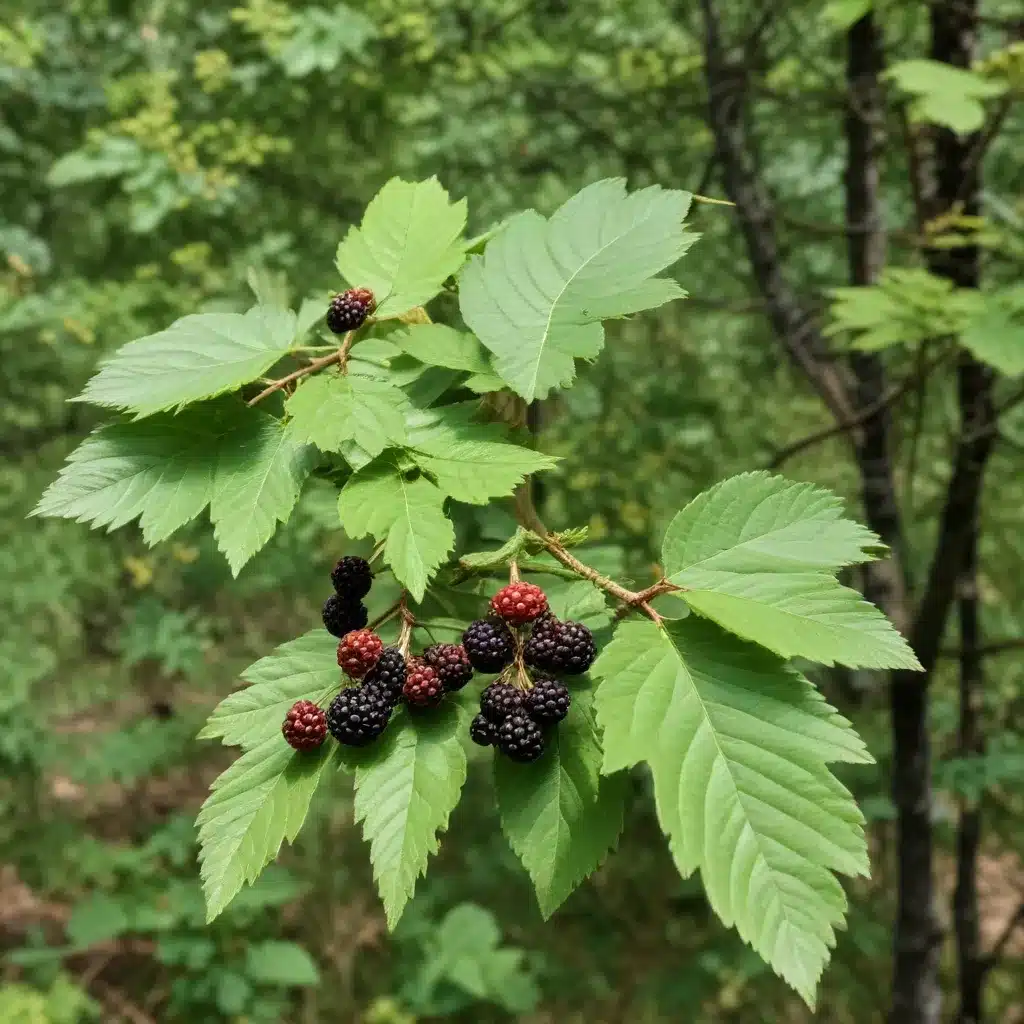
Blackberry Characteristics
Rubus fruticosus, commonly known as blackberry, is a deciduous shrub species that thrives in diverse urban environments. This adaptable plant exhibits an array of morphological and physiological traits that enable it to flourish in dynamic landscapes. The robust canes can reach heights of 2-3 meters, supported by a complex root system that extends both vertically and laterally. Leaves are compound, with 3-5 leaflets, providing an expansive canopy structure. Blackberry’s prolific flowering and fruit production are key attributes, contributing to its popularity in urban horticulture and landscaping.
Alder Characteristics
The Italian alder, Alnus cordata, is a fast-growing, deciduous tree species well-suited for urban environments. Reaching mature heights of 10-20 meters, the alder’s distinct pyramidal crown and gray-brown bark create a striking visual presence. Leaves are broadly ovate, with serrated margins, contributing to the tree’s ornamental appeal. A notable characteristic of the Italian alder is its nitrogen-fixing capability, enabled by symbiotic root nodules that harbor Frankia bacteria. This ability to enrich soil nutrient levels makes the alder an invaluable component in urban agroforestry systems.
Blackberry-Alder Interactions
The integration of Rubus fruticosus and Alnus cordata within urban landscapes offers a diverse array of ecological benefits. The alder’s rapid growth and ability to fix atmospheric nitrogen can directly enhance soil fertility, positively impacting the productivity of the associated blackberry crop. Conversely, the blackberry’s extensive rooting network and leaf litter can improve soil structure and organic matter content, creating a mutually beneficial relationship.
Additionally, the alder’s stature and crown architecture provide valuable microclimate regulation for the blackberry plants, moderating temperature extremes and reducing evaporative water loss. This shading effect can be further leveraged to optimize blackberry cultivation, ensuring adequate sunlight exposure while mitigating the risks of heat stress or drought.
Ecological Factors in Urban Environments
Abiotic Factors
The urban environment presents a unique set of abiotic challenges for plant species, including altered precipitation patterns, elevated temperatures, and increased soil compaction. Blackberry and alder, however, demonstrate remarkable resilience in the face of these stressors. The alder’s deep, extensive root system allows it to access water resources at greater depths, while the blackberry’s adaptable growth habit enables it to thrive in a variety of soil conditions.
Biotic Factors
Urban ecosystems are characterized by complex biotic interactions, including the prevalence of invasive species and the fragmentation of natural habitats. The integration of blackberry and alder within this context can enhance biodiversity by providing diverse habitat niches and food sources for urban wildlife. Moreover, the alder’s ability to fix nitrogen can help support the growth of other native plant species, fostering a more resilient and self-sustaining urban landscape.
Anthropogenic Influences
The presence of human activities and infrastructure in urban areas introduces a unique set of challenges for plant communities. Soil contamination, air pollution, and altered hydrology can all impact the health and productivity of blackberry-alder systems. Careful management and monitoring are essential to mitigate these anthropogenic stressors and ensure the long-term viability of these integrated urban ecosystems.
Spatial Patterns in Urban Landscapes
Habitat Fragmentation
The mosaic of built structures, transportation networks, and green spaces that characterize urban landscapes can lead to the fragmentation of natural habitats. This, in turn, can limit the dispersal and connectivity of plant species, such as blackberry and alder, within the urban matrix. Strategically integrating these species within a network of urban greenways and corridors can help maintain ecological function and promote the overall resilience of the urban ecosystem.
Landscape Connectivity
Enhancing landscape connectivity is a crucial aspect of urban ecosystem management. The judicious placement of blackberry-alder systems can facilitate the movement of pollinators, seed dispersers, and other beneficial organisms, ensuring the long-term viability of these integrated plantings. Careful consideration of edge effects and spatial configurations can maximize the ecological benefits of these urban agroforestry systems.
Heterogeneity and Diversity
Urban landscapes are inherently diverse, with a mosaic of land uses, built structures, and green spaces. Incorporating blackberry-alder systems within this heterogeneous matrix can increase the overall biodiversity and ecosystem services provided to urban residents. By leveraging the complementary traits of these species, urban planners and horticulturists can create a more resilient and multifunctional urban landscape.
Multivariate Approaches to Ecosystem Characterization
Data Collection Methodologies
Assessing the performance and ecological impacts of urban blackberry-alder systems requires a multidisciplinary approach. Integrating hydrological, pedological, dendrological, and meteorological measurements can provide a comprehensive understanding of the system’s dynamics and interactions. TriCounty Tree Care, for example, employs advanced techniques such as terrestrial laser scanning and 3D modeling to quantify the structural characteristics and biomass of these integrated plantings.
Statistical Modeling Techniques
The wealth of data collected from urban blackberry-alder systems lends itself to multivariate statistical analyses. Techniques such as principal component analysis and structural equation modeling can help elucidate the complex relationships between biotic and abiotic factors, informing management decisions and optimization strategies. These analytical approaches can also support the development of predictive models to anticipate the response of these integrated systems to future environmental changes or management interventions.
Multivariate Interpretations
By leveraging a multivariate perspective, urban planners and horticulturists can gain deeper insights into the functional dynamics of blackberry-alder systems. This holistic understanding can inform the design and implementation of these integrated plantings, ensuring their long-term sustainability and maximizing the ecosystem services they provide to the urban community. Through continued research and collaboration, TriCounty Tree Care is committed to advancing the science and practice of urban agroforestry, contributing to the creation of more resilient and livable cities.


